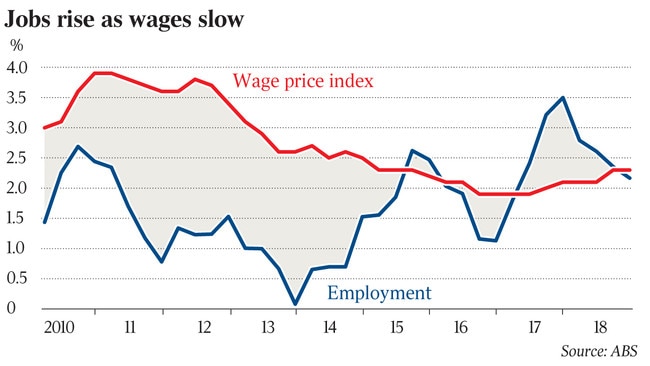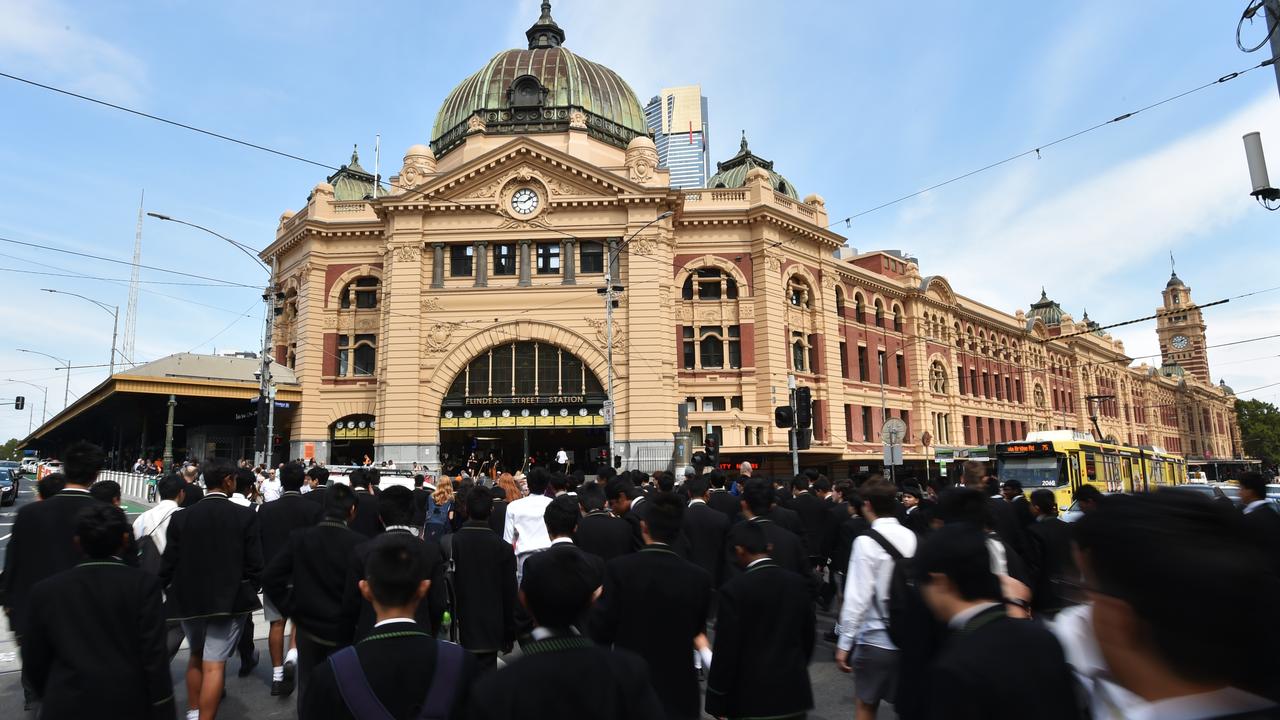Lots of jobs as wages stagnate
The 96,000 new jobs generated in the final three months of 2018 was double the post-crisis quarterly average.
The 96,000 new jobs generated in the final three months of 2018 was double the post-crisis quarterly average and raised the share of the adult population in work to a record 67.4 per cent.
The stellar run of employment growth, which built up a head of steam in 2017, continued into January this year, when the number of people with jobs rose by a further 39,000.
Almost 90 per cent of the net new jobs generated over the past year have been full-time positions.
However, market economists expect the labour force will start weakening in the wake of the dismal December quarter national accounts, possibly as soon as in the February labour force report this week.
Westpac senior economist Matthew Hassan predicts a 5000 fall in employment this week, pushing the jobless rate back to 5.1 per cent.
While this would be within the bounds of the normal volatility in the labour force survey, he says further declines are expected over the next three months as “the slower growth pulse combines with business putting hiring on hold around the Federal election”.
AMP chief economist Shane Oliver also expects this week’s labour force report to show an increase in the jobless rate to 5.1 per cent, with only 5000 new jobs created.
Reserve Bank governor Philip Lowe has identified the “growing tension between strong labour market data and softer GDP data” as a puzzle both in Australia and in other advanced countries, and declared the bank is putting a lot of effort into understanding it.
It may be that the two are related rather than in conflict. Falling unit labour costs could be encouraging business to invest in labour rather than capital. This would be consistent with low productivity, wages and economic growth, but a reasonable rise in jobs. It suggests employment may continue rising for some time yet.
The labour market has been particularly strong since the beginning of 2017, but employment has been on a generally rising trend since mid-2013.
Slower growth in employment had been anticipated, partly because the baby boomer generation is now retiring at a rate of around 250,000 a year.
However, the share of the adult population either working or looking for a job has been rising over the past three years and, at 65.7 per cent, is a whisker behind the 65.8 per cent record set at the peak of the resources boom in late 2010.
Baby boomers — the generation born between 1946 and 1960 — have been retiring later than previous generations, while there is a continuing rise in the participation of women in the workforce.
Among people aged from 15 to 64 years (to exclude the effect of baby boomer retirement) participation is at a record 78.3 per cent and has risen by 1.5 percentage points over the past two years.
The rise in participation meant the jobless rate was slower to respond than might have been expected, given the strength of employment. In 2017, when an amazing 413,000 new jobs were generated, the jobless rate only dipped from 5.8 per cent to 5.5 per cent. However, it has continued to head lower since then.

The RBA predicts the jobless rate will hold at its current 5 per cent throughout this year before easing to 4.8 per cent by mid-2021.
The decline in the jobless numbers is confirmed by Department of Social Services data showing the number of job-seekers on Newstart has dropped from 445,000 to 410,000 over the last year.
Over the last two years, employment has been rising at an average rate of 2.5 per cent, which is well ahead of the growth in the adult population of 1.7 per cent.
The economic projections of both the Reserve Bank and Treasury assume a period of above-average growth is required to soak up spare capacity in the economy and reduce levels of unemployment, and yet economic growth was soft both in 2017 (at 2.4 per cent) and last year (at 2.3 per cent).
The period of rapid employment growth has broadly paralleled the fall in average wage growth. Wage growth started dipping in 2013, dropping below 3.5 per cent, and has averaged 2.1 per cent since 2015.
The national accounts measure of compensation per employee, which is broader than wages and makes no allowance for changes in workforce composition, shows a sharper fall, with average growth of 1.2 per cent since 2015.
The national accounts show unit labour costs have been falling since 2016, and have now come down by 5.4 per cent. Economist Saul Eslake says the falling cost of labour encourages the substitution of capital for labour.
Eslake argues the real cost of labour to business has been falling behind labour productivity since the beginning of the century, with the result that the share of the economy going to wages has been in a trend decline while the share going to profit has been rising. Since 2000, the wage share fell from 55 per cent to 52.4 per cent, while the profit share has risen from 25.3 per cent to 27.6 per cent.
Eslake notes that the “wage explosions” in the mid-1970s, which led to wages rising much faster than productivity, resulted in rising unemployment and a much diminished profit share of the national economy. It was known as the “real wage overhang”. The policy response of the Hawke government was the “accord”, which, with the support of unions and business, sought to restrain growth in real wages to less than productivity. In a paper last year, Eslake argued Australia now suffers from the opposite — “a real wage underhang”. This is consistent with the growth in employment but falling wage share amid poor productivity growth. It needs to find a way of allowing real wages to grow faster than productivity for a while, he says.
Although low real wage growth has brought strong demand for labour, it will ultimately be self-defeating, as consumption accounts for about 60 per cent of the economy and cannot be sustained while real incomes are falling.



To join the conversation, please log in. Don't have an account? Register
Join the conversation, you are commenting as Logout